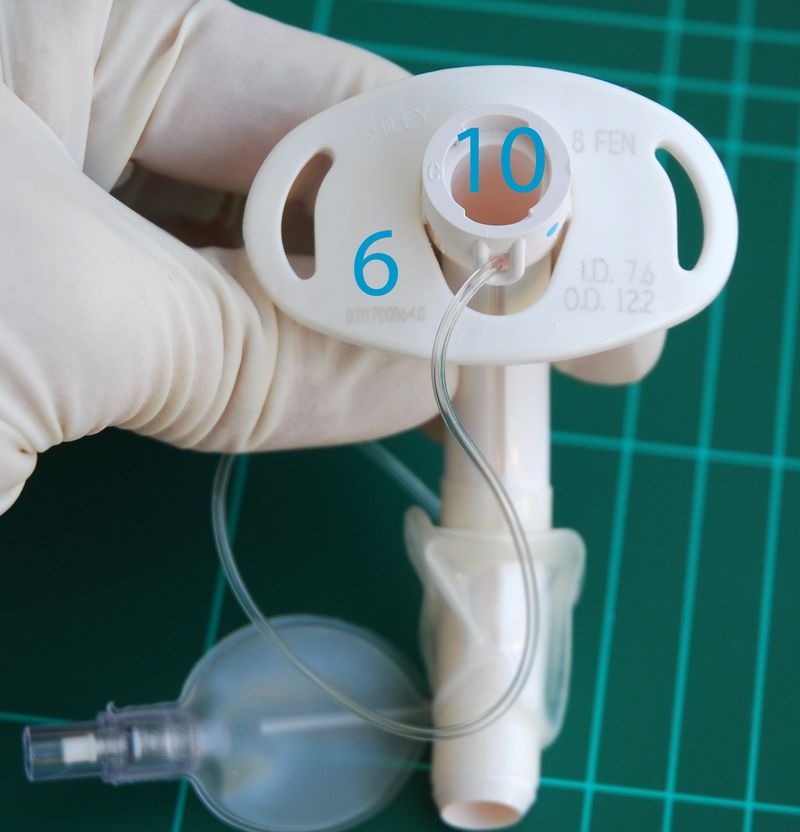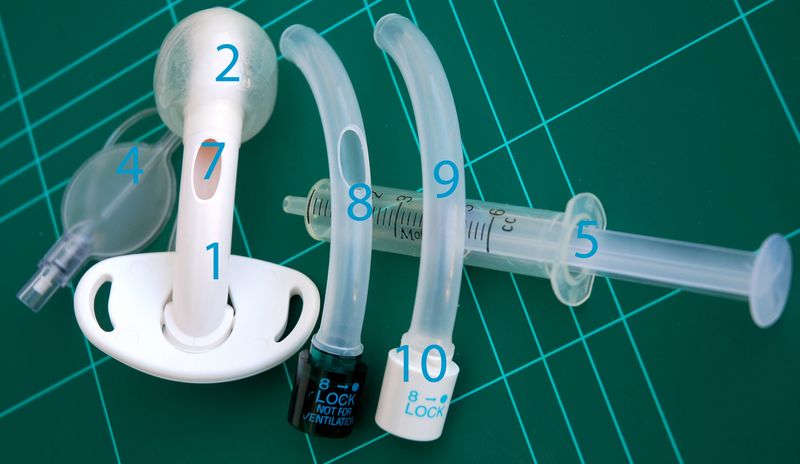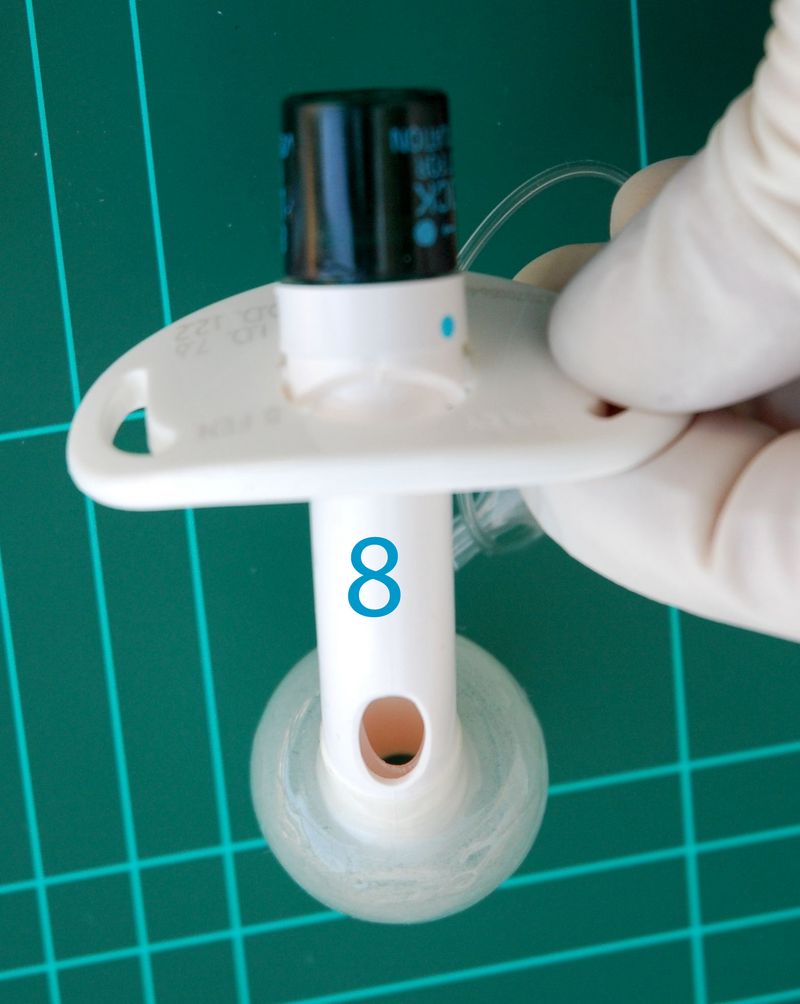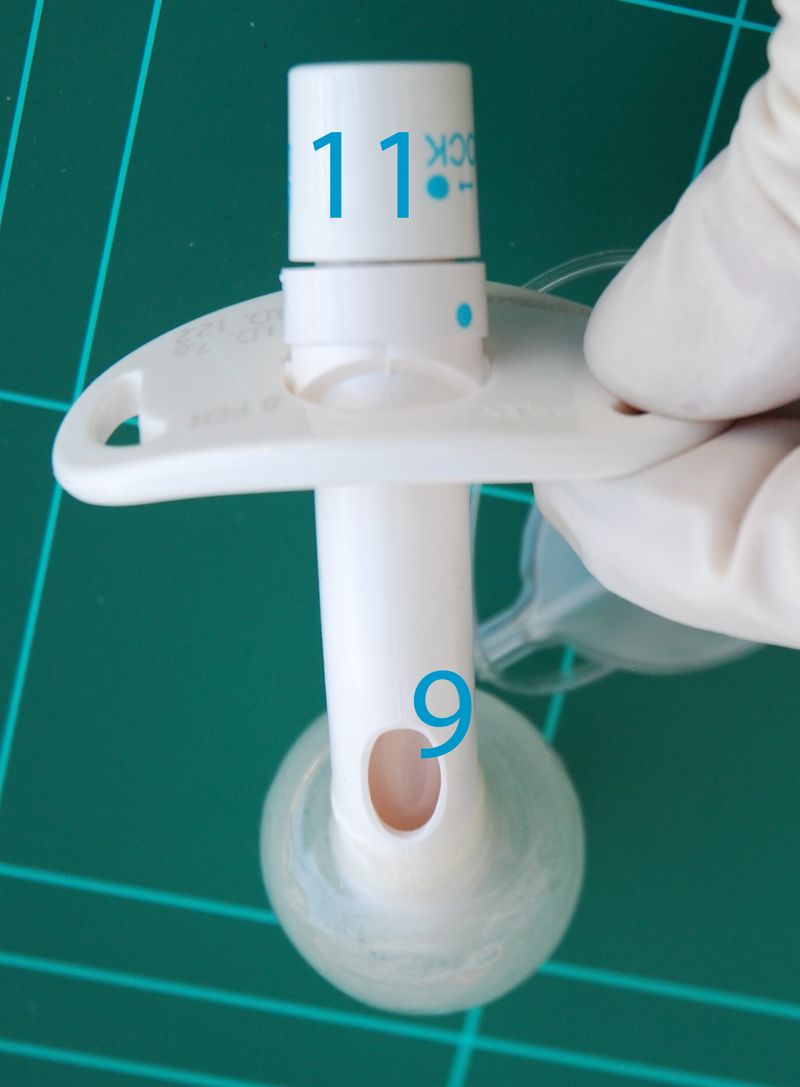Multi-purpose tracheostomy tubes
Disadvantages:
- High flow resistance due to the small inner diameter in relation to the outer diameter because of the thickness of the soft plastic
- Relatively expensive with a short lifetime
- No 22-mm connector for laryngectomy products
- Average wear comfort
- Non-sterilizable disposable item
As the dimensional drawings of multi-purpose cannulas are not standardized, the dimensions need to be obtained from the manufacturer’s product information.
The Shiley FEN cannula (tyco Healthcare USA) is a traditional long-term multi-purpose tracheostomy tube.
It consists of an outer cannula (1) with a low-pressure cuff (2) (a low-pressure balloon that is inflated with air and intended to prevent the aspiration of food). It is inflated by means of a Luer valve (3) with a Luer syringe (5). The reservoir balloon (4) displays the air pressure in the cuff.
The neck label (6) of the outer cannula is flexible, which means that the cannula does not move in the wind pipe as the patient moves his neck. The outer cannula is fenestrated through the cuff (7), which enables the patient to speak if a fenestrated inner cannula (8) has been inserted. Alternatively, a non-fenestrated inner cannula (9) can be inserted for instance to prevent aspiration when eating. The inner cannulas are secured to the outer cannula by means of a quarter-turn of a screw mechanism (10). The inner cannulas have a 15-mm ISO standard lug (11).
The use of a multi-purpose tracheostomy tube is rarely of use in laryngectomees because their air and wind pipes are usually safely separated from each other, so the disadvantages of such a complex cannula outweigh the benefits.
Multi-purpose tracheostomy tube systems (not exhaustive)
- Fahl: Duracuff® and Duravent®
- Tracoe®: twist
- Rüsch®: Tracheofix
- Portex® Blue Line Ultra




